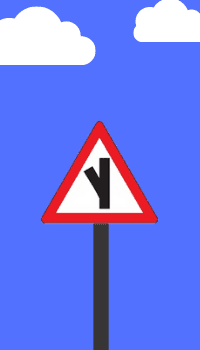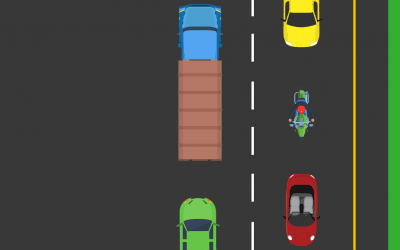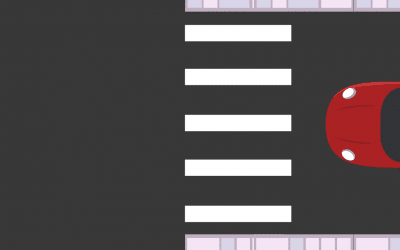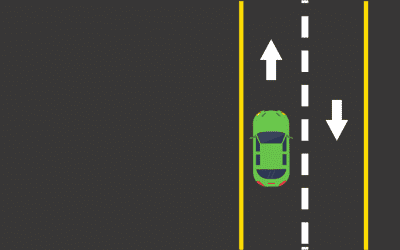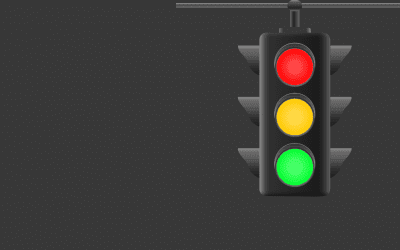This section covers guidance, information, regulatory, and warning signs for your South African learner’s license test.
Road sign groupings
K53 road signs get grouped into the following categories:
- Guidance and information signs.
- Regulatory signs.
- Warning signs.
- Temporary signs
Guidance and information signs
Guidance and information signs get grouped as follows:
- Location signs.
- Route marker signs.
- Direction signs.
- Tourism signs.
- Diagrammatic signs.
- Information signs.
Location signs
- Display the name of the place you have reached or are about to arrive.
- Some signs are grouped with a symbol to indicate the type of location.
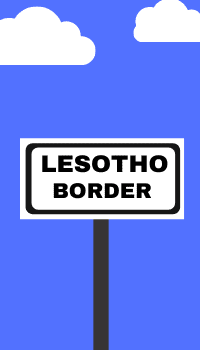
Route marker signs
These signs indicate a particular route or the direction you need to travel to get to a specific route.

Direction signs
- Indicate the direction to places and routes.
- Many of these signs are combinations of several directions and route marker signs.
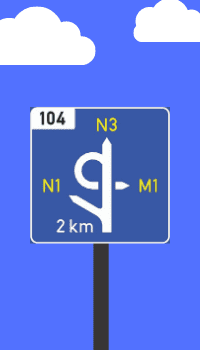
Tourism signs
Give you direction and information as a tourist on places of interest, services or rest facilities.

Diagrammatic signs
Indicate the pattern of traffic lanes ahead of you or important instructional information. The below sign instructs heavy goods vehicles to engage a lower gear.
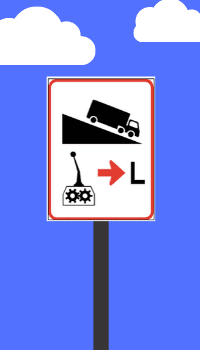
Information signs
Display general information. The sign below indicates that a turn to the left leads to a dead end.
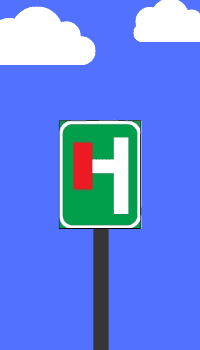
Regulatory road signs
Regulatory road signs are categorised as follows:
- Control signs.
- Command signs.
- Prohibition and limit signs.
- Reservation signs.
- Exclusive secondary signs.
- Comprehensive signs.
- De-restriction signs.
Control signs
Control the actions of a driver. The stop sign is an example of a control sign. You must bring your vehicle to a complete stop when you see a stop sign
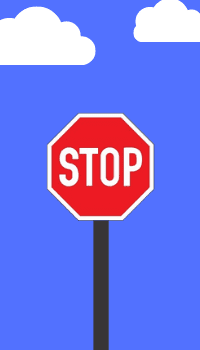
Command signs
- You must follow the indication for an action that the driver must take.
- This sign indicates you must travel at a minimum speed of 50km/h.

Prohibition & limitation signs
- Prohibit you from performing specific actions.
- These signs instruct you on the limits that must be adhered to.
- In this example, the sign is a regulatory limit sign limiting drivers to a speed of 100km/h.
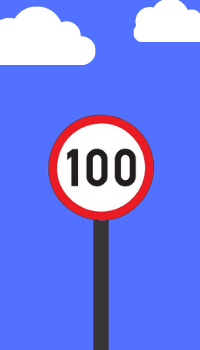
Reservation signs
Indicate that the roadway, lane or parking area used is for certain classes of vehicles only.
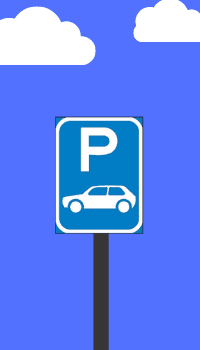
Exclusive secondary signs
- These signs are grouped with any regulatory sign to indicate that it applies only to that situation.
- In this example, the exclusive secondary sign is the motorcycle illustration. It’s grouped with a regulatory limit sign.
- The signs indicate you must drive at a speed limit of 100km/h if riding a motorcycle.
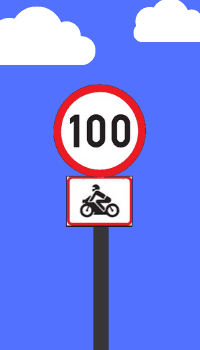
Comprehensive signs
- Comprehensive signs indicate that you are about to enter a roadway or area governed by a complete set of rules.
- This sign indicates you are entering a residential area and that children may be at play.
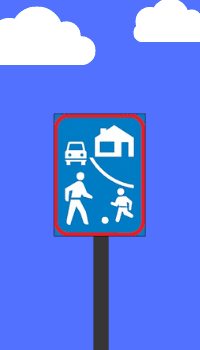
De-restriction signs
De-restriction signs indicate that you are about to exit a roadway or area governed by a comprehensive set of rules.
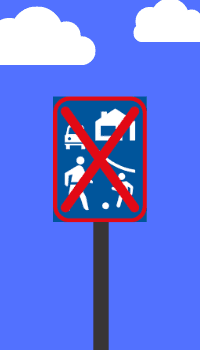
Warning signs
Warning signs are categorised as follows:
- The direction of travel signs.
- Symbolic signs.
- Hazard warning markers.
- Road layout signs.
The direction of travel signs
- Indicate the direction of travel that lies ahead by using arrows. You can see from the indicators that the direction of travel is circular.
- In this example, the sign indicates a warning to you that there is a roundabout ahead.
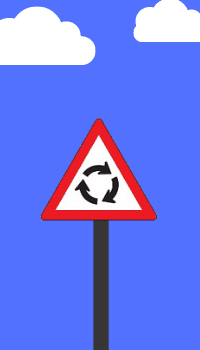
Symbolic signs
- Use symbols to indicate the nature of what lies ahead of you.
- In this example, the symbol used is a control sign (stop).
- The warning sign indicates there is a stop street ahead of you. This way, you are not taken by surprise by a sudden stop.

Hazard warning markers
- These markers enhance driver safety and get placed near a hazard indicating the position of the danger.
- In this example, the risk is to the left.
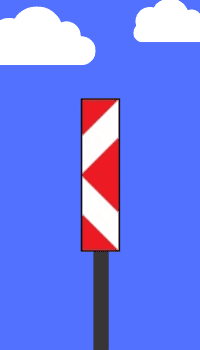
Road layout signs
- Indicate the layout of the road ahead.
- In this example, the sign warns you that the two-lane road you are travelling will begin to split.
